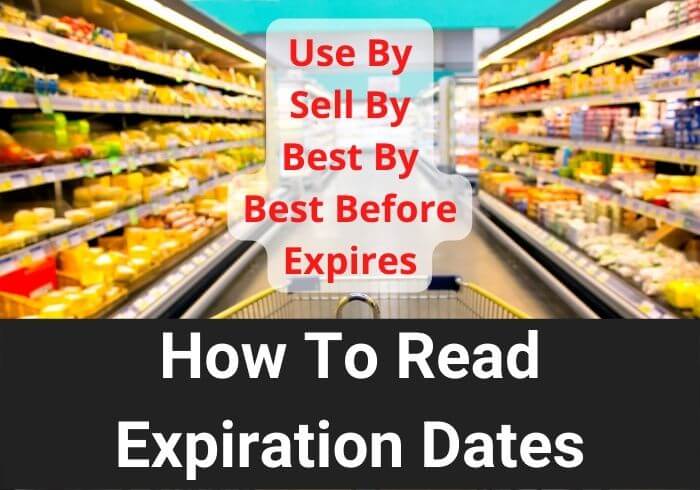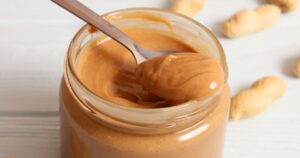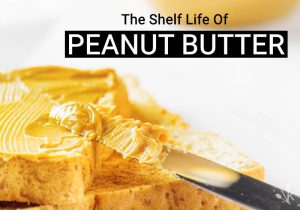If you’ve ever looked at the jumble of numbers and possibly letters labeling a food product, you may have wondered, “What is this box trying to tell me?” Is the food going bad? Is it the can’s birthday? Is the imminent apocalypse closing in?
Today, you will learn how to read the dates your food is labeled with. You will find out what the “best by” date is, how it’s different from the “use by” date, and what it means for your health and safety.
Food Date Labels and How To Read Them
In the United States, there’s no official date-based system for labeling food and food products. The exceptions to this are infant formulas and baby food, which need to be extra safe to keep our kids healthy.
For the rest of the food you see on your supermarket shelves, though, it’s basically a jungle of labeling anarchy.
Manufacturers may or may not voluntarily date their packages to try to indicate levels of freshness and quality for their consumers. This is because food safety and quality depend on a lot of things that manufacturers have no accurate way of predicting beyond an educated guess.
These include things like:
- How long it takes for a product to sell
- What temperature you keep it at when it gets to your home
- Whether or not you reseal the package after opening it
- Etc.
You are usually the person who is in the best position to tell when something in your pantry or fridge is no longer safe to eat. If you have questions about specific foods, our Shelf Life guides can give you ideas on specific signs to look for to help you stay safe without unnecessary waste.
That being said, the labels on packaged foods can give you an idea of when the product was manufactured and about how long it will probably stay at peak quality.
There are two kinds of dating systems used by most food product manufacturers:
- Open dates
- Closed dates
Open Date
An open date is a label that uses the standard calendar system. These are used by manufacturers to help estimate the quality of life left of the product and by stores to keep track of how long they’ve had a product in circulation. They’re easier to read and can give you an idea of how long a product will be at peak freshness.
Open dates are decided entirely by the product’s manufacturer with no government involvement. In the end, if you’ve bought a product, you’re the one who will have to decide whether or not to pay attention to the date on it.
The open dating system is used by most fresh foods, including dairy products, eggs, meat, and poultry.
Closed Date
A closed date is a coded dating system that uses continuous strings of letters and numbers. This system is generally used by manufacturers internally to help them track their inventory. Closed dates, also known as coded dates, are more often used on shelf-stable products like food that comes in cans or boxes.
If a product you’re curious about doesn’t display the words “best by” or “use by,” the dating system is probably closed. That means it isn’t specifically related to the item’s quality or freshness, but it can still tell you something about the product, like when it was put into that box.
Unfortunately, these dates can be difficult to decipher because there isn’t a single standard system in place. Each manufacturer has its own format of numbers and letters that only it knows. Here are some common dating abbreviations used by large food manufacturing companies.
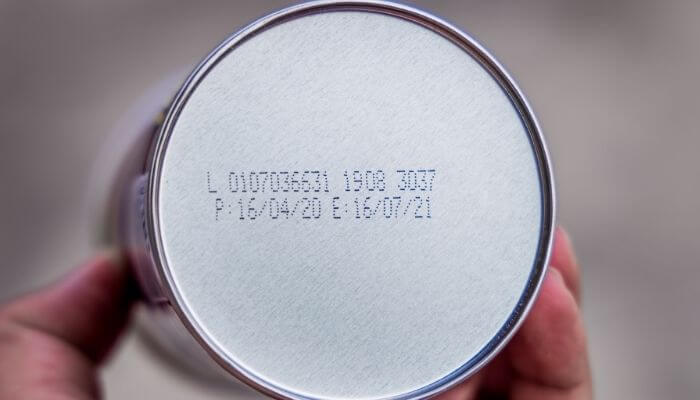
If there’s a letter at the beginning, it usually refers to the month. Closed dates tend to use the letters A through L to represent the 12 months of the year. A would be January, B would be February, and so on until L, which would be December.
The numbers after the letter would be the day of the month and the year, or the year may come before the letter representing the month. In this system, “April 23, 2018” could read “D2318” or “2018D23.”
Some brands use the numerals 1 through 9 to represent the months January through September and the first letters of October, November and December to represent the last three months. “April 23, 2018” would be labeled as “42318,” but “November 23, 2018 would be “N2318.”
Sometimes a closed code just uses numbers in one of the standard orders, like YYMMDD or MMDDYY. If you read a code with six digits and no numbers, it’s probably in a standard month-day-year format. “April 23, 2018” would be “042318.” If it’s using the year-month-day format, the label would read “180423.”
Best By
The USDA calculates that almost a third of the country’s food supply gets wasted by consumers and retail stores. One main source of this waste is confusion about what the labeled dates on the package mean. Too many people throw away perfectly good food because they think the date on a package means something it doesn’t.
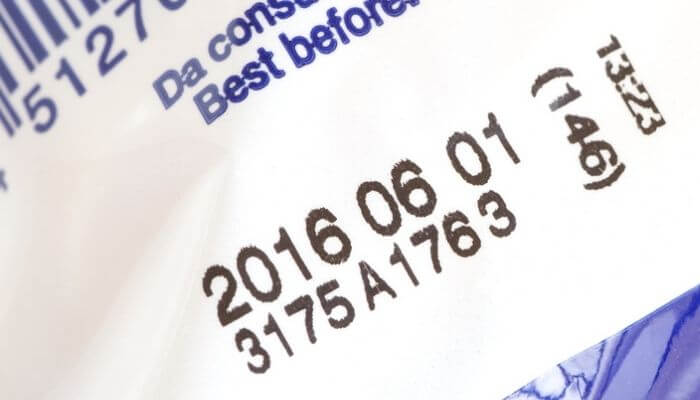
To try to eliminate as much of this confusion as possible, the Food Safety and Inspection Service (FSIS) and the USDA have been recommending that food manufacturers stick to one kind of date label only. They believe that if food retailers and manufacturers want to put a date on their products, they should stick to a clearly labeled “best if used by” date and nothing else.
The FSIS and USDA prefer the above wording because it’s unambiguous and difficult to misinterpret. It clearly conveys the intended meaning that the product will be at peak quality before the date shown without insinuating that it will have gone bad or should be thrown away after the specified date.
If you have a product labeled something along these lines, whether “best by,” “best if used by” or something similar, it only means that you’ll get maximum flavor, texture, and freshness if you consume it before that date. “Best by” dates are not safety dates and should not be seen as guidelines for food disposal.
If the product inside the package doesn’t have any signs of age or deterioration, it’s still wholesome and safe, and you shouldn’t have any qualms about scarfing it down. Most food products remain safe to purchase, eat or donate long past the “best by” date. Regardless of the date on the label, you should evaluate everything you eat before you eat it to make sure it passes your own quality and health check.
Use By
One of the main sources of labeling confusion is the “use by” date. Even though the wording sounds strict and dire, “use by” dates are only intended to let consumers know the last estimated date of peak quality of a product. Beyond the “use by” date, that product will slowly lose quality, but this process can take a long time.
The “use by” date is not an expiration date. Food companies generally try to be as conservative as possible about their “use by” dates, and the food inside generally remains good long after the labeled date.
Yogurt can stay delicious around two weeks past its “use by” date. Cereal can last as long as eight months past the “use by” date, and unopened packages of frozen fruit and vegetables are generally good for around 10 months after. Peanut butter usually lasts a year past the date.
Sell By
The “sell by” date is there to tell your grocery store how long they should keep a product on their shelves. It has nothing to do with the safety of the product and isn’t an indication of when the product will expire.
Julian Date Code on Food Products
The Julian date format is an abbreviated dating method for shelf-stable food products. It’s usually used on products like boxed cereals, canned goods, beans, crackers, pasta, etc.
Julian dates tend to be from three to seven digits long. They generally refer to the date a non-perishable food product was packaged.
If the Julian number has seven digits, the first four will refer to the year. If it only has five digits, the year will be the first two digits. In a seven-digit Julian date format, “2018” will appear as “2018,” but in a five-digit Julian date format, it will appear as “18.”
The last 3 numbers refer to the day of the year. In this format, each day in a year gets a number between one and 365 or 366 if the year in question was a leap year.
For example, in the Julian format, “April 23, 2018” would be appear as 18113. April 23rd is the 113th day in a non-leap year. In a leap year, however, April 23rd would be the 114th day, so “April 23, 2020” would appear as 20114.
Final Thoughts
The “best by” date is the most important label on your food. It tells you the general window of peak quality for that product. Most of the other kinds of dates are used by food manufacturers to keep track of their inventory.
“Best by,” “use by” and “sell by” dates are not expiration dates.
Most kinds of food remain healthy and safe long after their window of peak quality. Whatever the date on the label says, you should use your eyes and nose along with our Shelf Life guides to help you determine whether or not a food product is still edible.

